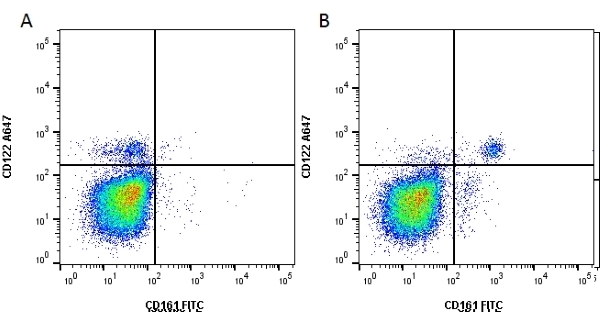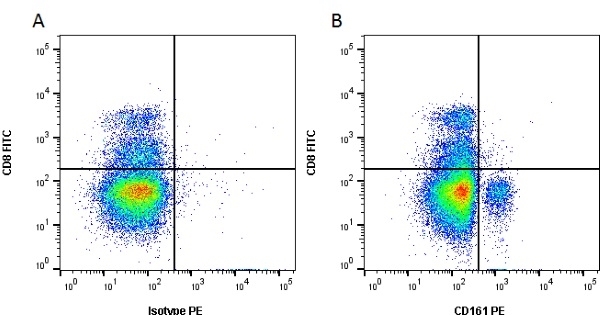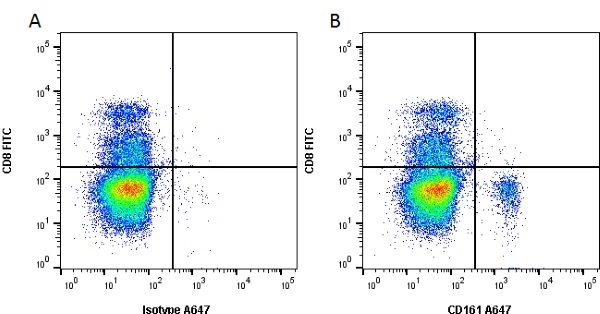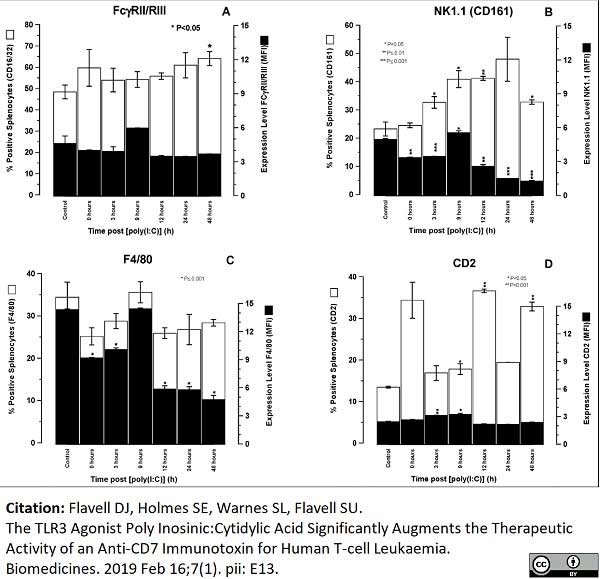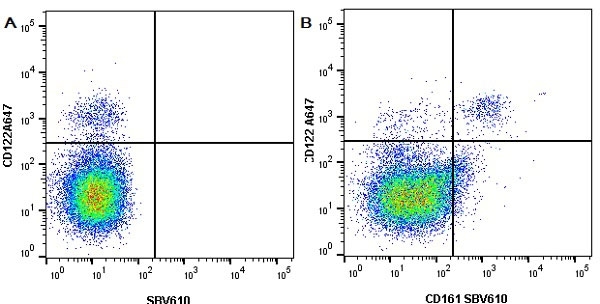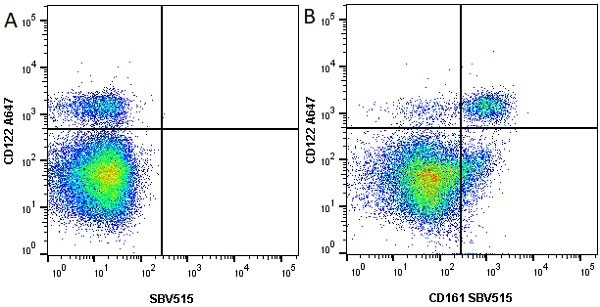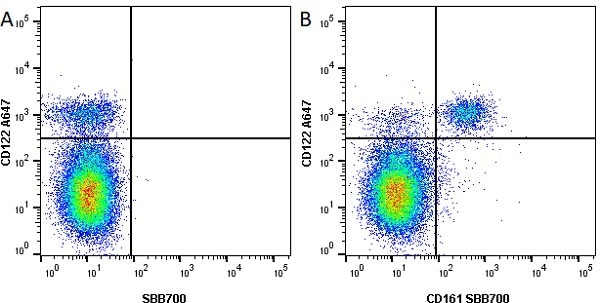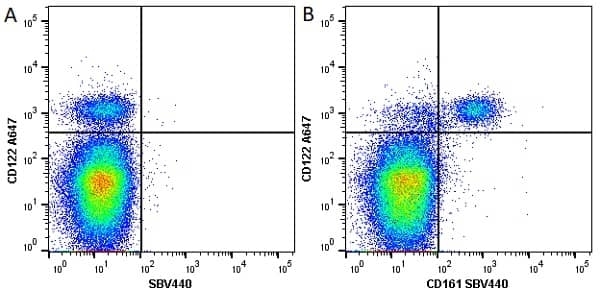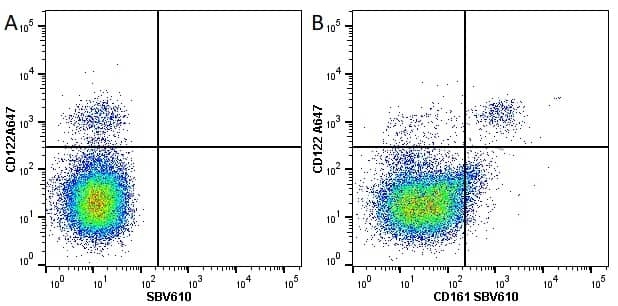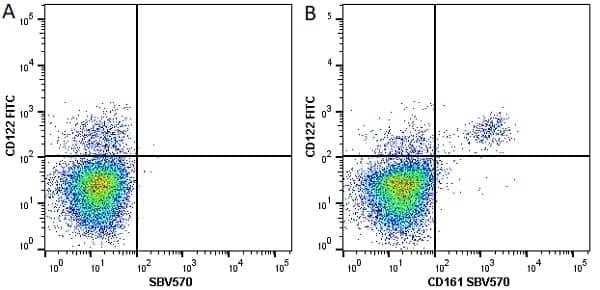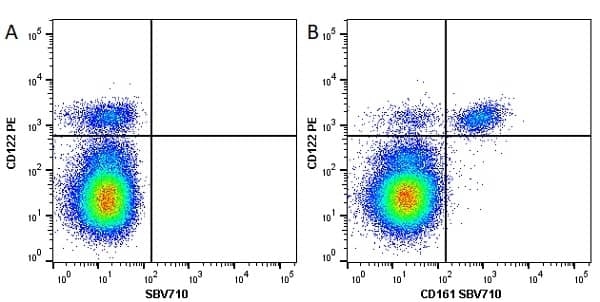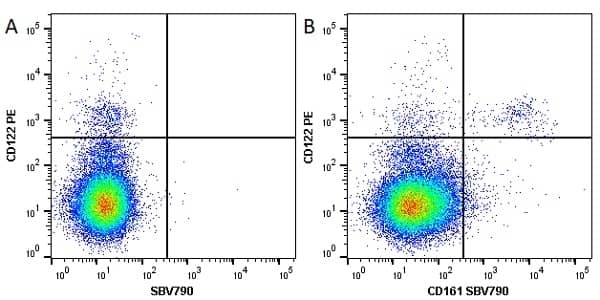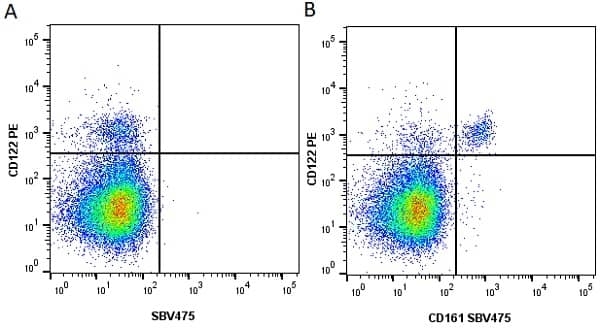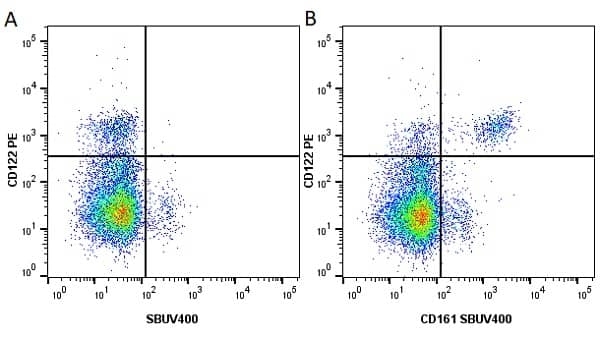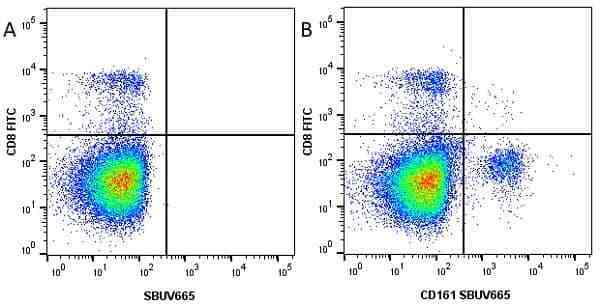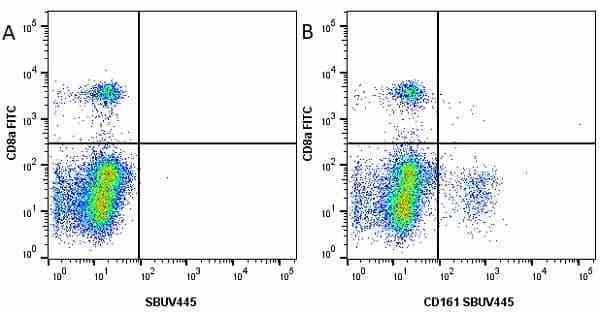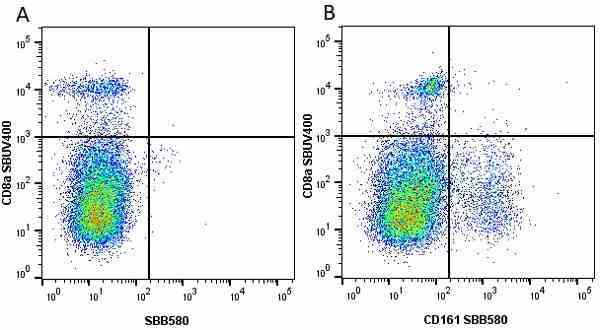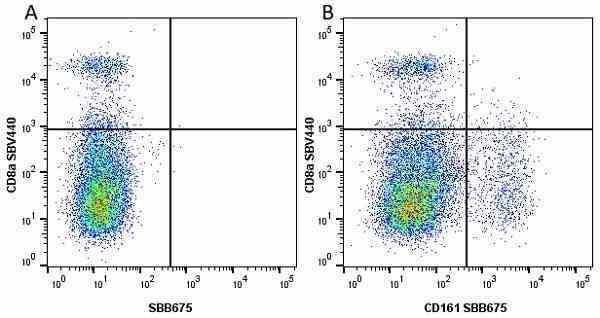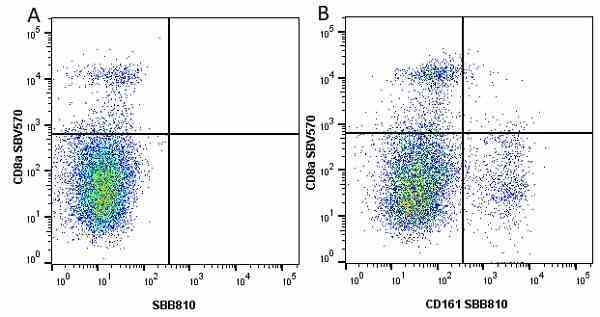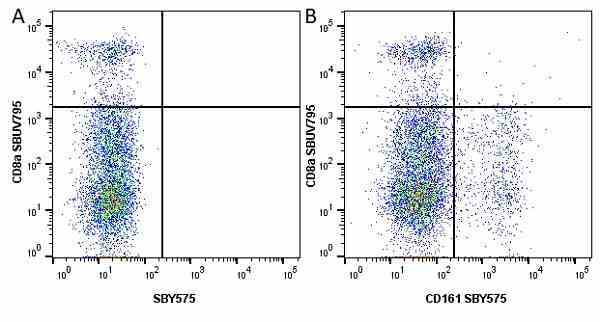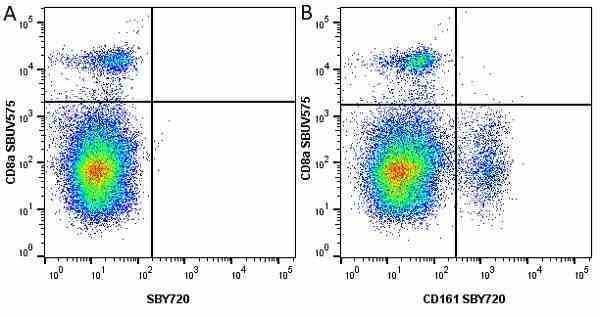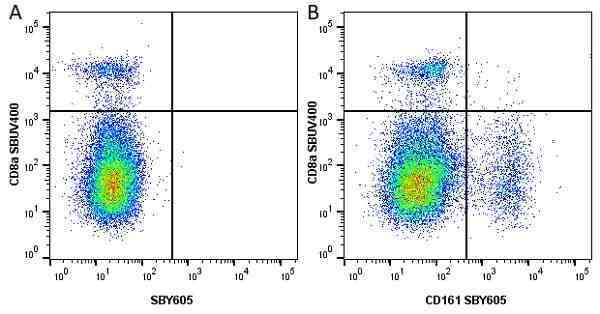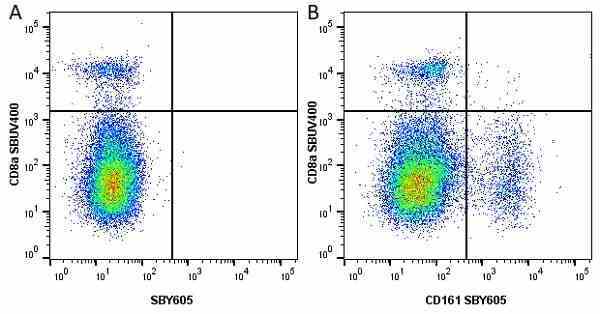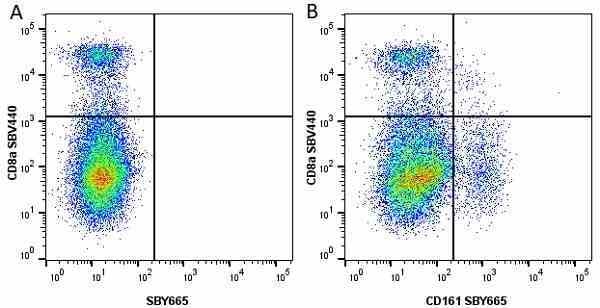CD161 / NK1.1 antibody | PK136


























Mouse anti Mouse CD161 / NK1.1
- Product Type
- Monoclonal Antibody
- Clone
- PK136
- Isotype
- IgG2a
- Specificity
- CD161 / NK1.1
| Mouse anti Mouse CD161 / NK1.1 antibody, clone PK136 recognizes the mouse NK1.1 cell surface antigen, a cell surface glycoprotein encoded by members of the NKR-P1 gene family. The NK1.1 surface antigen is also known as CD161b/CD161c and Ly-55. In the mouse the NKR-P1 family has three members, NKR-P1A, -B and -C, whilst in the human only one member has been identified. The human protein has received the designation CD161, and the mouse proteins have been referred to as CD161a, -b, -c etc. Although previously thought to recognize only CD161c, recent data has shown that the PK136 antibody may also react with CD161b. CD161c expression itself is strain specific in mice, but recognition of CD161b by PK136 appears to be even more complex, as only some CD161b positive strains are labelled by the antibody. Engagement of CD161c has been reported to have activating function in NK cells, whilst engagement of CD161b is inhibitory. Mouse anti Mouse NK1.1 Antigen antibody, clone PK136 is useful for the identification of NK cells in selected strains of mice (positive on C57BL, FVB/N and NZB, but negative on AKR and BALB/c) and is also expressed by rare subsets of T cells and monocytes. Mouse anti Mouse NK1.1 antibody, clone PK136 has also been used for in vivo depletion of NK cells (Wang et al. 2022) and in vitro activation of NK cells (Kung and Miller 1995). |
- Target Species
- Mouse
- Species Cross-Reactivity
-
Target Species Cross Reactivity Rat Human - N.B. Antibody reactivity and working conditions may vary between species.
- Product Form
- Purified IgG - liquid
- Preparation
- Purified IgG prepared by affinity chromatography on Protein A from tissue culture supernatant
- Buffer Solution
- Phosphate buffered saline
- Preservative Stabilisers
- 0.09% sodium azide (NaN3)
- Carrier Free
- Yes
- Immunogen
- Spleen and bone marrow cells from CE mice.
- Approx. Protein Concentrations
- IgG concentration 1 mg/ml
- Fusion Partners
- Spleen cells from immunized (C3H x BALB/c) FI Hybrid were fused with cells of the Sp2/0 - Ag14 myeloma cell line.
- Regulatory
- For research purposes only
- Guarantee
- 12 months from date of despatch
Avoid repeated freezing and thawing as this may denature the antibody. Storage in frost-free freezers is not recommended.
| Application Name | Verified | Min Dilution | Max Dilution |
|---|---|---|---|
| Cytotoxic Assays | 1ug/ml | 10ug/ml | |
| Flow Cytometry | 5ug/ml | 10ug/ml | |
| Immunoprecipitation |
- Flow Cytometry
- Use 10μl of the suggested working dilution to label 1 x 106 cells in 100μl
Source Reference
-
Koo, G.C. & Peppard, J.R. (1984) Establishment of monoclonal anti-Nk-1.1 antibody.
Hybridoma. 3 (3): 301-3.
References for CD161 / NK1.1 antibody
-
Koo, G.C. et al. (1986) The NK-1.1(-) mouse: a model to study differentiation of murine NK cells.
J Immunol. 137 (12): 3742-7. -
Kung, S.K. & Miller RG (1995) The NK1.1 antigen in NK-mediated F1 antiparent killing in vitro.
J Immunol. 154 (4): 1624-33. -
Wang, M. et al. (1998) Natural killer cell depletion fails to influence initial CD4 T cell commitment in vivo in exogenous antigen-stimulated cytokine and antibody responses.
J Immunol. 160 (3): 1098-105. -
Halin, C. et al. (2002) Enhancement of the antitumor activity of interleukin-12 by targeted delivery to neovasculature.
Nat Biotechnol. 20 (3): 264-9. -
Carnemolla, B. et al. (2002) Enhancement of the antitumor properties of interleukin-2 by its targeted delivery to the tumor blood vessel extracellular matrix.
Blood. 99: 1659-65. -
Svensson, L. et al. (2003) gammadelta T cells contribute to the systemic immunoglobulin E response and local B-cell reactivity in allergic eosinophilic airway inflammation.
Immunology. 108 (1): 98-108. -
Ebbinghaus, C. et al. (2005) Engineered vascular-targeting antibody-interferon-gamma fusion protein for cancer therapy.
Int J Cancer. 116 (2): 304-13. -
Joseph-Pietras, D. et al. (2006) Anti-tumoural activity of peripheral blood mononuclear cells against melanoma cells: discrepant in-vitro and in-vivo effects.
Melanoma Res. 16: 325-33.
View The Latest Product References
-
Hazlett, L.D. et al. (2007) NKT cells are critical to initiate an inflammatory response after Pseudomonas aeruginosa ocular infection in susceptible mice.
J Immunol. 179 : 1138-46. -
Sakai, T. et al. (2010) Inflammatory disease and cancer with a decrease in Kupffer cell numbers in Nucling-knockout mice.
Int J Cancer. 126: 1079-94. -
Ekstrand-Hammarström, B. et al. (2011) Inhalation of alkylating mustard causes long-term T cell-dependent inflammation in airways and growth of connective tissue.
Toxicology. 280 (3): 88-97. -
Khallouf, H. et al. (2012) 5-Fluorouracil and interferon-α immunochemotherapy enhances immunogenicity of murine pancreatic cancer through upregulation of NKG2D ligands and MHC class I.
J Immunother. 35 (3): 245-53. -
Klezovich-Bénard M et al. (2012) Mechanisms of NK cell-macrophage Bacillus anthracis crosstalk: a balance between stimulation by spores and differential disruption by toxins.
PLoS Pathog. 8 (1): e1002481. -
Gock, H. et al. (2014) Altered glycosylation in donor mice causes rejection of strain-matched skin and heart grafts.
Am J Transplant. 14 (4): 797-805. -
Gustafsson, Å. et al. (2015) Differential cellular responses in healthy mice and in mice with established airway inflammation when exposed to hematite nanoparticles.
Toxicol Appl Pharmacol. 288 (1): 1-11. -
Flavell, D.J. et al. (2019) The TLR3 Agonist Poly Inosinic:Cytidylic Acid Significantly Augments the Therapeutic Activity of an Anti-CD7 Immunotoxin for Human T-cell Leukaemia.
Biomedicines. 7 (1) Feb 16 [Epub ahead of print]. -
Miao, M. et al. (2021) Reevaluation of NOD/SCID Mice as NK Cell-Deficient Models.
Biomed Res Int. 2021: 8851986. -
Li, L. & Li, M. (2023) Astrocyte-derived extracellular vesicles inhibit the abnormal activation of immune function in neonatal mice with hypoxic-ischemic brain damage by carrying miR-124-3p.
Neurol Res. 45 (12): 1079-90.
Further Reading
-
Arase, N. et al. (1997) Association with FcRgamma is essential for activation signal through NKR-P1 (CD161) in natural killer (NK) cells and NK1.1+ T cells.
J Exp Med. 186 (12): 1957-63.
- RRID
- AB_322347
- UniProt
- P27814
- P27812
- Entrez Gene
- Klrb1b
- Klrb1c
- GO Terms
- GO:0004872 receptor activity
- GO:0005887 integral to plasma membrane
- GO:0005529 sugar binding
- GO:0009897 external side of plasma membrane
- GO:0042803 protein homodimerization activity
- GO:0045953 negative regulation of natural killer cell mediated cytotoxicity
- GO:0045954 positive regulation of natural killer cell mediated cytotoxicity
MCA1266
If you cannot find the batch/lot you are looking for please contact our technical support team for assistance.
Please Note: All Products are "FOR RESEARCH PURPOSES ONLY"
View all Anti-Mouse ProductsAlways be the first to know.
When we launch new products and resources to help you achieve more in the lab.
Yes, sign me up